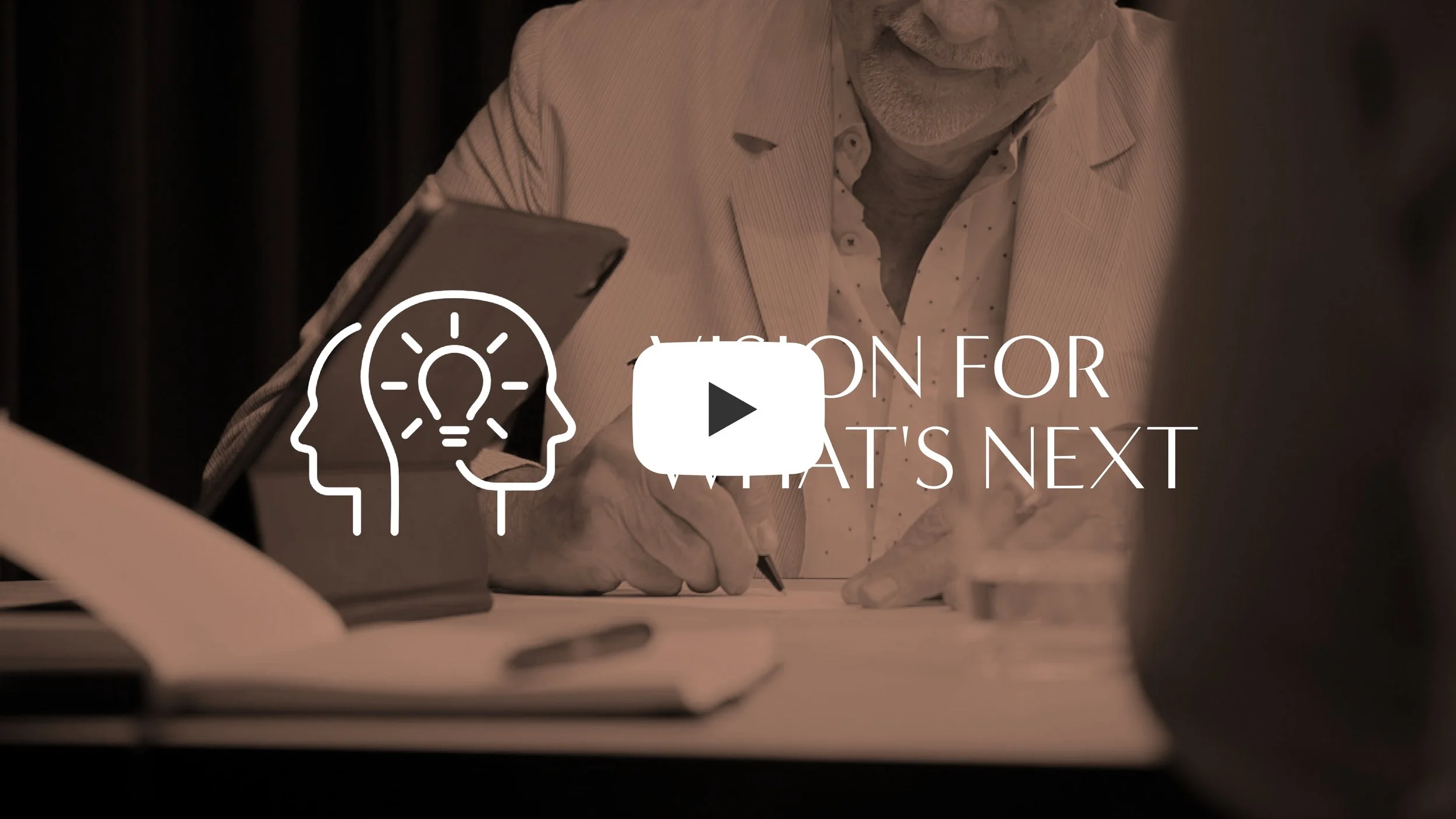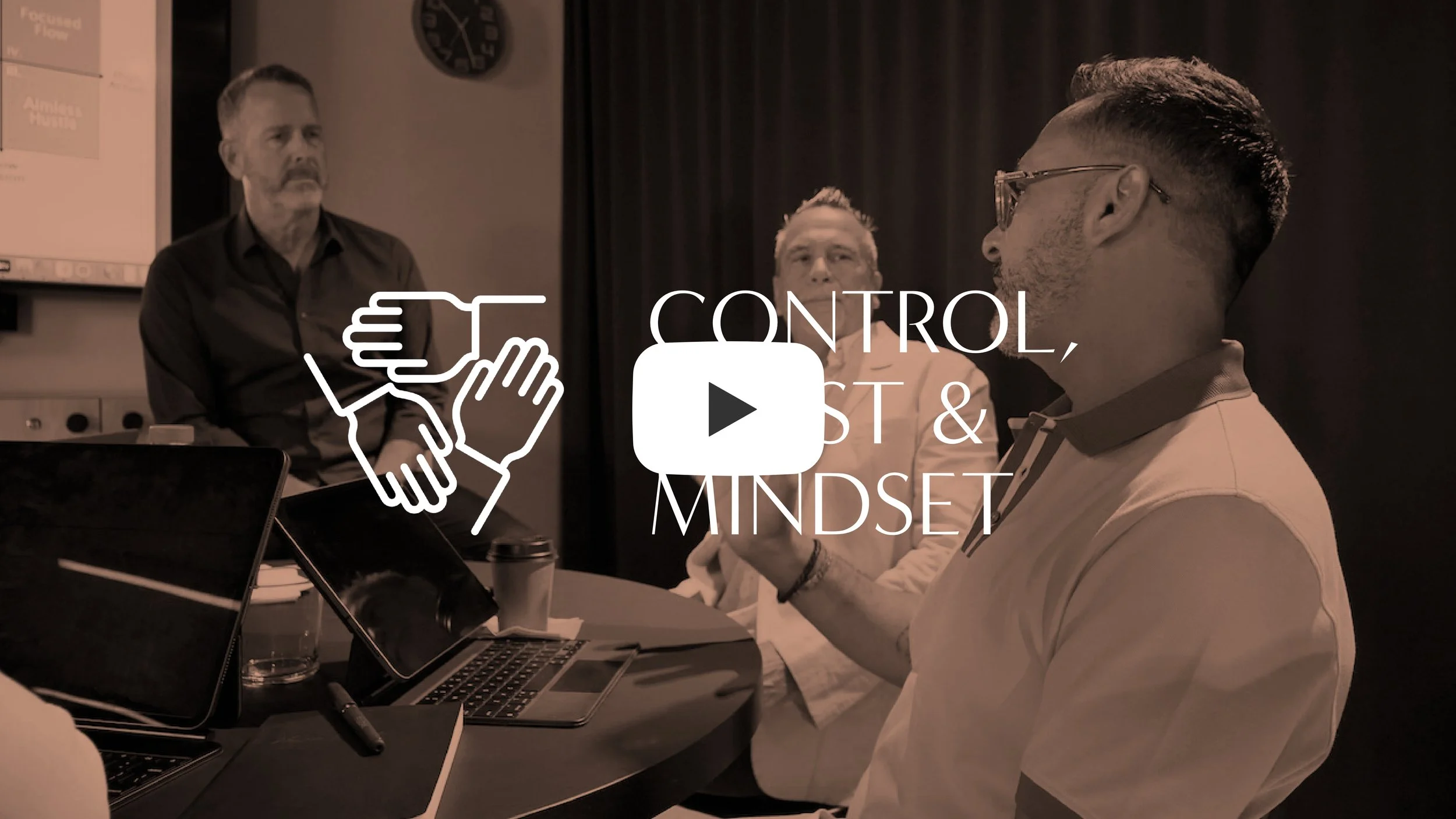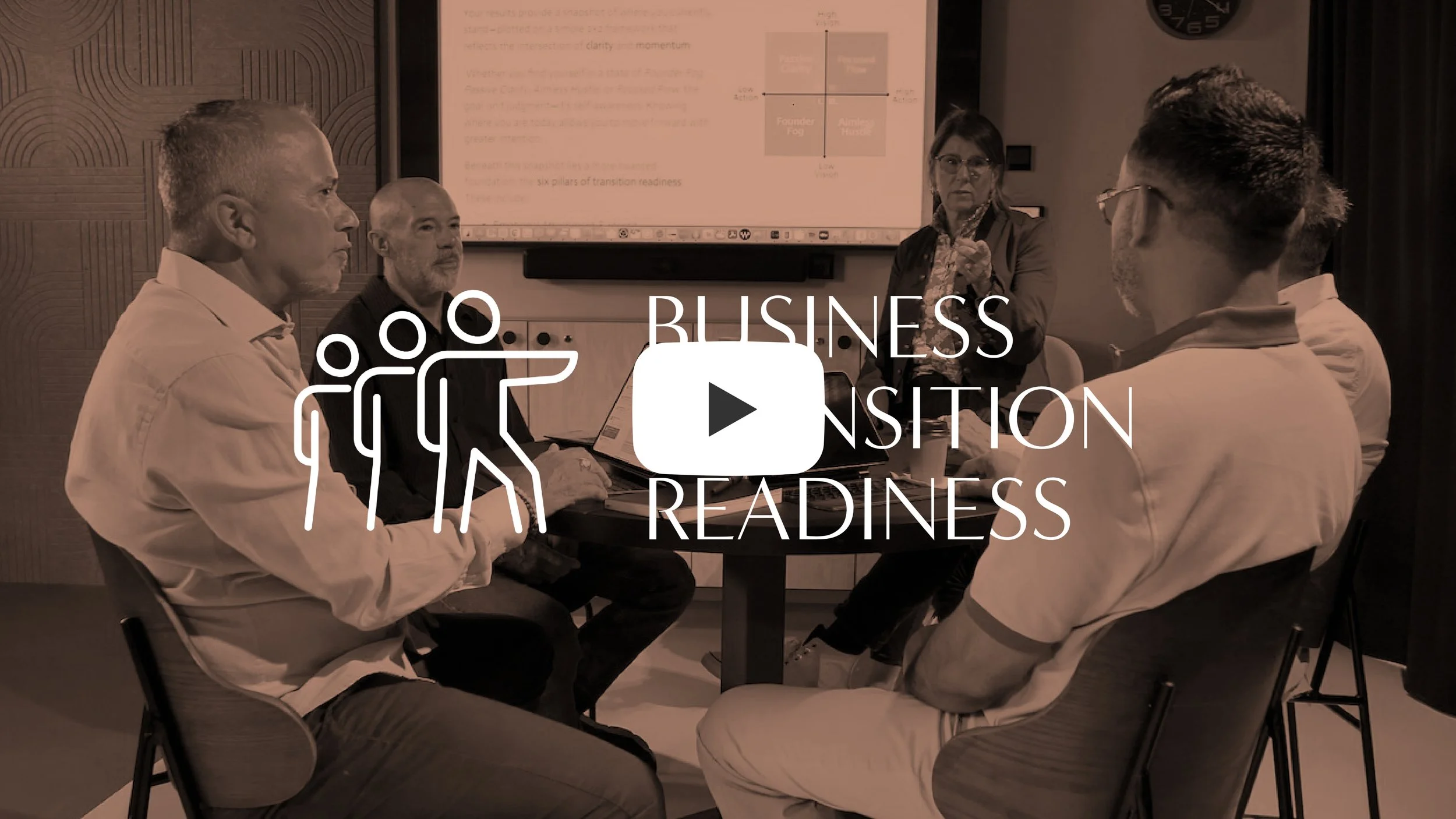Next Steps
Understanding Your Results and What Comes Next
If you’ve taken the Founder’s Transition Readiness Assessment, you’ve already done something courageous: you’ve paused—maybe for the first time in a while—to ask, what’s next? That pause matters.
Most business exit plans focus heavily on the financial, legal, and operational components—but often skip over the most personal one: the emotional due diligence. That’s where the Founder’s Transition Lab comes in.
This program was created for business owners navigating one of the most important and overlooked seasons of their lives. It’s designed to help founders explore what comes next—not just for the business, but for themselves.
Why the Personal Side Matters
For many founders, personal planning has taken a back seat. When it does surface, it’s often reduced to external goals—buying a cabin, traveling more, spending time with grandchildren.
And while those things matter, they’re not the whole story.
Personal readiness begins with identity. Until you can imagine who you are outside of the company you’ve built, even the most financially sound exit plan can stall. The most fulfilled sellers aren’t just escaping something—they’re moving toward something that matters deeply.
True freedom doesn’t begin when the business is sold. It begins when there’s a vision for what comes next that feels authentic, aligned, and exciting. That’s the kind of clarity the Founder’s Transition Lab is designed to support.
Why So Many Founders Regret Selling
According to the Exit Planning Institute’s 2023 State of Owner Readiness report, 75% of owners regret selling within one year. And it’s not because the deal fell apart—it’s because they hadn’t figured out who they were without the business.
If you’re reading this, you’re already doing the work that helps avoid that outcome. You’ve paused to reflect. Now’s a good time to go one layer deeper.
Questions Worth Asking
How has your role changed over the years?
Does it still feel like a fit?
When you’ve made big transitions in the past, how did you know it was time?
Even 60 seconds of reflection can open something up. And that’s the point. This is the kind of thinking that helps create an exit aligned with identity, purpose, and freedom.
The Founder’s Transition Readiness Assessment offers a snapshot of where a founder stands right now—plotted on a simple 2x2 framework that maps vision clarity against action readiness.
The goal isn’t judgment—it’s self-awareness. Whether you find yourself in a state of Founder Fog, Passive Clarity, Aimless Hustle, or Focused Flow, the insight lies in naming where you are so you can move forward with greater intention.
The Six Pillars That Shape a Founder’s Readiness
Your overall state of transition readiness is shaped by the mindset you bring to six key pillars. Each pillar reflects an area that deeply influences the emotional, strategic, and relational dimensions of an exit.
Here’s a quick look at each one:
Emotional Attachment & Identity
Understanding how your identity is tied to the business can help you release with clarity, not regret.Vision for What’s Next: A clear, compelling vision for life beyond the business helps ensure your exit is driven by purpose—not just circumstance.
Control, Trust & Mindset: Your mindset shapes how smoothly your transition unfolds; learning to trust the process (and others) is often the hardest—and most important—part.
Communication & Relational Dynamics: Open, thoughtful communication with key stakeholders reduces friction and builds alignment around the path forward.
Capacity & Prioritization: If everything feels urgent, nothing gets prioritized—including your exit. Making space for this work is essential to moving forward with intention.
Business Transition Readiness: Strategic planning is what turns a good idea into a great transition—minimizing disruption and maximizing personal and financial outcomes.
The Three Mindsets
Let’s take a closer look at what each of these mindsets can look and feel like in the context of transition:
Protective Mindset: The protective mindset often shows up when something feels uncertain or negatively charged. You might be feeling stuck, overwhelmed, or hesitant to let go. Underneath it all, there’s usually something you’re trying to protect—your identity, your team, your family, or simply your sense of control. That’s a very human place to be. If your results suggest you are carrying a protective mindset into a given pillar, it’s not a red flag—it’s a cue to slow down and get curious about what’s really driving your resistance.
Coping Mindset: In this mindset, you’re getting things done. You’re managing the demands of working toward a transition, and from the outside, it might look like everything’s on track. But inside, you may feel like you’re going through the motions or holding things together without a lot of clarity or inspiration. You could be motivated to do this work because you know it’s going to please someone else, or because it’s propping up an image of who you think you’re supposed to be.
Empowered Mindset: This mindset reflects a sense of clarity, curiosity, and momentum. It is grounded in authenticity and is intrinsically motivated. You’re not forcing anything—you’re making decisions from a place of alignment. When you carry an empowered mindset into a given pillar, it means your energy is working with you, not against you. That’s worth celebrating. And it’s also something you can build on across other areas.
Mindsets aren’t fixed. They shift—and awareness allows them to shift intentionally. When a founder can name what they’re experiencing, they can lead with grounded clarity instead of reaction.
The Transition Readiness Report outlines where a founder is showing up with each of these mindsets and offers practical suggestions for growth.
Where to Go From Here
Once you receive and review your Founder’s Transition Readiness Report, there are a few ways forward:
Sit with the results.
Sometimes the most powerful next step is simply to reflect. That’s a valid and valuable choice.
Take steps independently.
Some founders feel ready to begin experimenting with small changes on their own.
Join a Trial Run of the Lab.
If you’re craving structure, peer support, and momentum, the next best step is to experience a complimentary Trial Run.
What Is a Trial Run?
In the trial runs, we bring 6-8 business owners together who have expressed interest in joining the Lab after taking the Founders Transition Readiness Assessment. After determining there are no conflicts of interest between the potential attendees, we identify a virtual meeting date that works for all and everyone agrees to confidentiality.
The complimentary trial run meetings are designed to give participants a true sense of what they would experience if they went on to join. We will do a group exercise that is never personally intrusive, but does surface important issues that will be processed in a facilitated conversation. Upon completion of the Trial Run, most people are very clear if FTL is the right fit for them, or not. We are not for everyone, but if we are for you – we are really for you.
How Cohorts Are Formed
Following the trial run, if you decide to join, we take great care to create a cohort of individuals at similar stages of their journey. We use their states of readiness and their mindset scores across each of the six pillars to curate small groups of non-competing business owners who share a similar set of needs on their way to their next chapter.
Once a cohort is formed, we identify a recurring virtual meeting schedule, focused two-hour monthly sessions that helps members reflect, reset, and move forward.
The Most Powerful
Benefit of the Lab
One thing is certain – the community of business owners in a cohort is the most powerful benefit of Lab membership. Each member is a founder in a similar season and that shared context creates trust, rapport and deep conversations surfacing insights you won’t find anywhere else. It’s a space to both support others, and be supported, as you roll up your sleeves and get real about who you are, and are to become.
How the Founder’s
Transition Lab Works
The journey begins with the Founder’s Transition Readiness Assessment—a clear snapshot of where you stand personally, strategically, and energetically as you approach transition.
From there, participants move through a 12-session curriculum, structured into three phases:
PHASE 1: REVEAL
Sessions 1–3 focus on uncovering the beliefs, patterns, and attachments that may be shaping decisions—sometimes without conscious awareness. This is where clarity begins to emerge.
Phase 2: Align
Sessions 4–6 help you define what you truly want, aligning you next chapter with core values, family priorities, and legacy goals.
Phase 3: Act
Sessions 7–12 are all about building capacity, having courageous conversations, and taking practical steps toward a well-executed, deeply aligned exit.
What’s Included
In addition to monthly two-hour cohort sessions, members gain access to:
Optional assessments
Quarterly expert-led workshops
One-on-one coaching
A personalized digital platform (via 90.io) to track goals, reflections, and their evolving roadmap
Everything is designed to support momentum—not just insight.
When to Begin
If you are within 10 years of exit, now is the time to start. Transitions that lead to both personal and financial success take time—and most business owners say they wish they’d started this work sooner.
A Final Thought
This isn’t just a program—it’s a place to pause, reflect, and reset. Whether a you choose to take the next step with a call, join a Trial Run, or simply sit with your results, we hope your Founder’s Transition Readiness Assessment results will continue to serve as a powerful guide.
This work isn’t about rushing to the finish line. It’s about intentionally designing what comes next—with clarity, confidence, and a renewed sense of purpose.
Warmly,
Lisa Bosse & Chris Evans
Founder Transition Coaches








